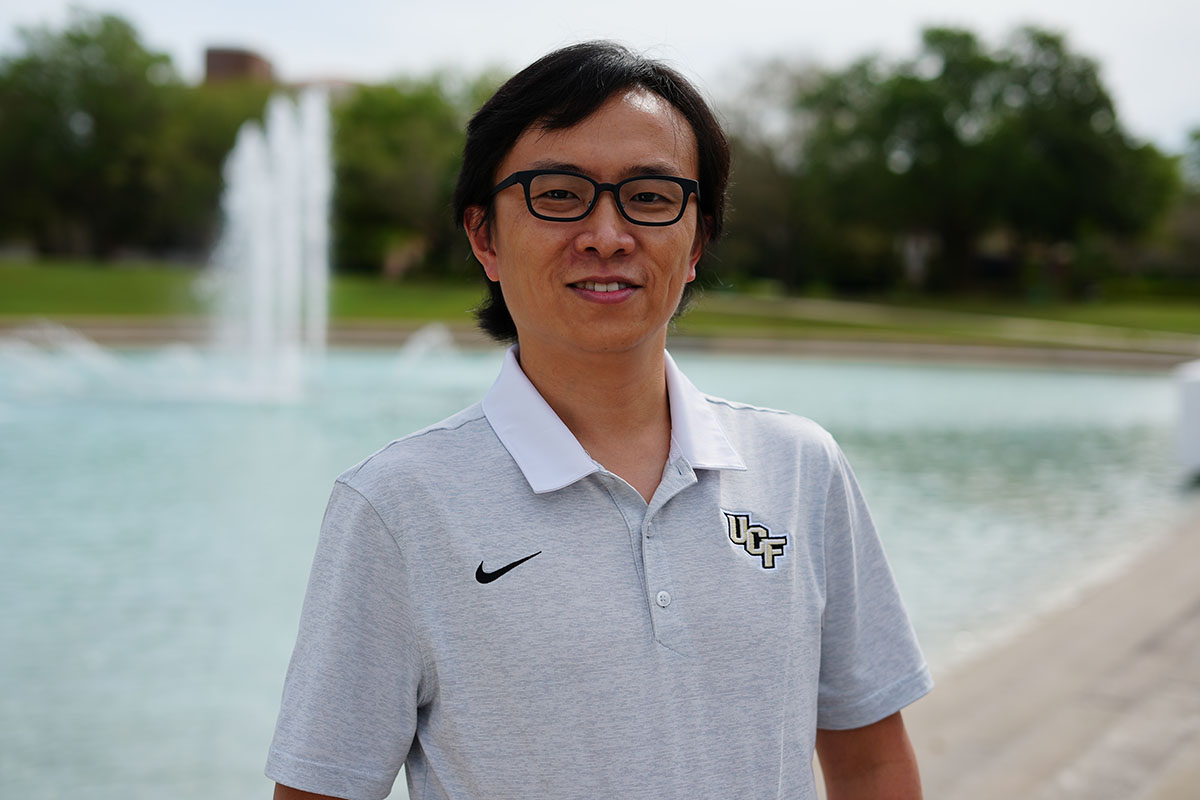Yue ‘Gurt’ Ge will be studying how partnerships between weather forecasters and critical infrastructure operators can enhance systems’ resilience to hurricanes and other disasters.

Yue “Gurt” Ge, an assistant professor in the School of Public Administration, has been chosen as part of the 2021-23 cohort in the National Center for Atmospheric Research’s Early Career Faculty Innovation Program.
Just in time for hurricane season, Ge and his team will soon begin studying the partnerships between weather forecasters and critical infrastructure operators through his project, “Science-Practice Partnerships for Hurricane Forecast Use in Enhancing Critical Infrastructure Resilience in Florida.”
“There's not much research looking at your infrastructure dependency and interdependencies and how they collaborate with scientists for weather forecasting,” says Ge, the principal investigator on the project. “We want to look at how to connect these two groups by having them work together to help with business continuity planning and resilience management.”
The Early Career Faculty Innovation Program award recognizes early-career faculty and supports their research and education endeavors through a multi-year grant. Ge was awarded $100,000 for the project, with UCF’s portion totaling $71,700.
He also will be working with a graduate researcher and National Center for Atmospheric Research staff including Rebecca Morss, who works in the center’s Mesoscale and Microscale Meteorology Laboratory. Ge and his team plan to survey critical infrastructure operators throughout the Florida to better understand how they perceive the efficacy of weather forecasts and research institutions that work on forecast models, as well as how they incorporate such information into their emergency operations plans.
The goal is to create or improve the partnerships between weather forecasters and critical infrastructure sectors, as well as other stakeholder groups — such as government agencies and nonprofit organizations — that also have a footprint in infrastructure management before, during and after disasters.
The project will begin with an exhaustive web search to identify critical infrastructure and service providers of power, liquid fuel and roads throughout the state. Service coverage maps will be made to show infrastructure service zones of the three sectors.
Next, Ge and Morss will develop a collaborative web survey targeting emergency operators in each sector. The self-administered survey will be distributed to these providers, who will be asked about their current practices of supporting and operating critical infrastructures during hurricane season, and how they adapt and incorporate weather forecast models into their operation plans and practices. The data collected will be analyzed and shared with National Center for Atmospheric Research researchers and modelers for further interpretation.
“We want to figure out how these private entities operate during hurricane season and how they use modeling forecasts for hurricane hazard mitigation purposes for their facilities,” he says. “It’ll be informative for both forecasters and the industrial operators to better their predictions, or better use the predictions to mitigate damages and losses after disasters. They are the backbone of infrastructure, and their business continuity is so critical for successful response and recovery during and after hurricane season.”
He hopes this research will be useful in improving emergency planning and business continuity of infrastructure systems like power, fuel and roads in order to reduce service disruptions and build their resilience to disasters. Ge also sees it as an extension of another study he is working on through a $1.2 million National Science Foundation Smart and Connected Communities grant.
“I'm trying to extend my current study into the infrastructure field, test some similar hypotheses about partnership building and resilience management, and understand how risk communication could be better situated in public and private sectors’ planning for emergencies and disasters,” he says.